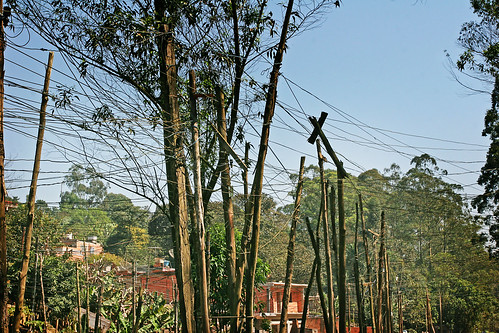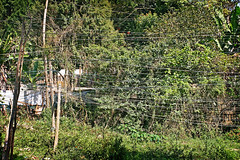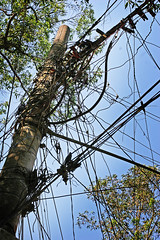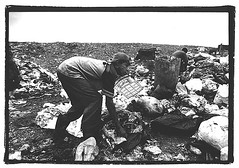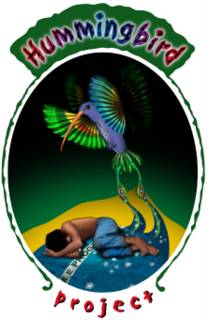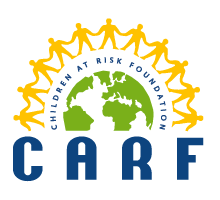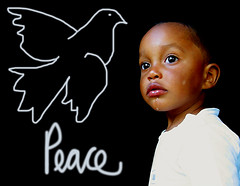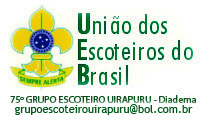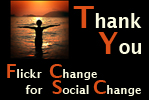Thursday, December 13, 2007
Retrospective 2007
Looking back on yet another year of Hummingbird's successful social actions in benefit of our community and the many thousands of children and young people who populate it.
This film is our THANK YOU to all our friends and sponsors for their engagement and support in 2007, and hopefully an invitation for many more to come join us in support of 2008's exciting actions for positive social change to prevent more kids from hitting the streets of Brazil.
This film is our THANK YOU to all our friends and sponsors for their engagement and support in 2007, and hopefully an invitation for many more to come join us in support of 2008's exciting actions for positive social change to prevent more kids from hitting the streets of Brazil.
Saturday, September 8, 2007
Dinheiro na Mão é Muito Legal...
“Money in hand is great fun” was the name of the first motivational workshop arranged by IDORT – SP, not only for the ASAS youth group, but also for other youth scholarship holders at Hummingbird.
 IDORT consultant, Samuel Marques, leads our young people to a better understanding of the value of R$1.00 in their hand.
IDORT consultant, Samuel Marques, leads our young people to a better understanding of the value of R$1.00 in their hand.
IDORT is an institution specialized in training and capacitating people from all different levels of society, contributing towards the development and qualification of public and private administration in Brazil these last 75 years. They will be doing a series of small capacity building workshops for our youth during the course of the year, the next being “Leadership and Teamwork”.
 Isabelli, Jessica and Roberta have one thing in common; a strong desire to learn more each day. Through the ASAS project they will have plenty of opportunities.
Isabelli, Jessica and Roberta have one thing in common; a strong desire to learn more each day. Through the ASAS project they will have plenty of opportunities.
Youth in our ASAS group receive a small, monthly scholarship grant to guarantee their possibility to participate 20 hours weekly in the programme. As we don’t want them to simply waste these funds in an uncontrolled manner, the objectives with this workshop were to offer them the necessary tools to plan and control their personal economy by stimulating and establishing aims, analyzing income and expenses, and to cultivate long-term thinking towards the formation of patrimony and savings. But this learning will not only give them important knowledge on personal economy, it will also be helpful if put into use when planning social projects as future youth leaders in our prevention programme.
Content matter included personal cash flow, financial check-up for the family, credit, dept and Bank relationships, and the elaboration of a personal economy project for self use and to multiply with others.
The workshop was a four hour affair, with multi-media presentations and group dynamics, where our suitably equipped theatre was ideal for the occasion.
 Jefferson and Wallison, busy with better planning on how they should use their scholarship grant each month. Hopefully they will have learnt something about the value of hard-earned money and how to administer their personal finances, and maybe even multiply this within their own families.
Jefferson and Wallison, busy with better planning on how they should use their scholarship grant each month. Hopefully they will have learnt something about the value of hard-earned money and how to administer their personal finances, and maybe even multiply this within their own families.
CARF’s Scholarship Program is unique and aims to preserve the positive development of a safe and healthy environment for at-risk youth, safeguarding the process of growing up to become responsible and productive citizens. For underprivileged community youth with only minimum basic public education and access to very few formal job opportunities, a scholarship signifies a whole new world of possibilities. Through the partnership programmes developed in cooperation with our positive peer group at the Hummingbird Arts & Cultural Activity Centre, we aim to mobilize young people as active agents, promoting positive transformations in their own life and that of their community.
Unfortunately not all children from at-risk communities have regular access to such healthy environments as the Hummingbird Centre, which not only offers self-awareness, self-love, and self-esteem, but also guarantees the child’s moral and emotional intelligence by building development assets in young people based on the categories of support, empowerment, boundaries, constructive use of time, commitment to learning, positive values, social competencies, and positive identity. These important factors in the process of growing up to become successful young adults and inverting the picture from clients to citizens are essential if we are to combat degeneration in such societies. This process not only needs time and patience, but also financial support to thrive.
 Daniel is the youngest member of ASAS, but as he himself says: “I’m stubborn and persistent” so has no problem keeping up with older colleagues.
Daniel is the youngest member of ASAS, but as he himself says: “I’m stubborn and persistent” so has no problem keeping up with older colleagues.
CARF’s Youth Capacity Building Scholarships contain the following elements:
(i) Recipients must attend an average of 20 hours per week in a CARF-sponsored development and training programme(s). Attendance and participation is monitored and recorded weekly.
(ii) Scholarship recipients must maintain the regular public school attendance of up to 20 hours per week.
(iii) The scholarships are used to help pay for their educational materials, traveling costs on public transportation and other personal necessities. In addition, they can also help pay for supplementary external activities or educational courses, which are crucial in enhancing future job and life opportunities.
(iv) The scholarships will also help pay for some family expenses such as part of the electric bill or basic foodstuffs, which is expected from teenagers in the family structure once they reach a “working” age.
(v) By helping to contribute to the family expenses, this also helps ease the pressure off the youth to go out and take on temporary, informal jobs, which often interfere with any further educational progression.
(vi) Scholarships allow youth to be involved in educational and vocational training programs at CARF’s Hummingbird Arts & Cultural Activity Center (ECBF – Espaço Cultural Beija-Flor), strengthening their individual life project as opposed to hustling to make money or becoming involved in the ever-present drug trafficking that is profuse in most underprivileged communities in Brazil.
(vii) The programme includes regular orientation and education regarding drugs, alcohol, sex, the environment, citizenship and money management.
(viii) Monitoring of the current family situation helps motivate parent/guardian involvement and safeguards against improper use of the scholarship, giving maximum priority to funding their selected program activities.
 A round of applause for workshop participants as they each receive their personal certificate of participation from IDORT consultant, Samuel Marques.
A round of applause for workshop participants as they each receive their personal certificate of participation from IDORT consultant, Samuel Marques.
In this way we aim to cultivate social inclusion: with youngsters who feel more confident in the future and capable of building their lives; improvement in the quality of family life; better school attendance, with an effective participation in the school's activities; young people looking to live off a legitimate income earned by doing an honest and dignifying job; real choices in terms of leisure activities in the area, through the activities promoted by the Hummingbird Cultural Network; Groups of strong, solid and motivated youngsters that provide a new positive example and spread their values throughout their community.
 At the end of the workshop each one also received a small surprise envelope in hand from Samuel, containing a R$1.00 banknote to be invested and multiplied according to the knowledge gained during the workshop. Here Edi, one of Hummingbirds talented percussionists, receives his with a smile.
At the end of the workshop each one also received a small surprise envelope in hand from Samuel, containing a R$1.00 banknote to be invested and multiplied according to the knowledge gained during the workshop. Here Edi, one of Hummingbirds talented percussionists, receives his with a smile.
 If you would like to know more about how you can sponsor a scholarship please read the article on our other Blog.
If you would like to know more about how you can sponsor a scholarship please read the article on our other Blog.
 IDORT consultant, Samuel Marques, leads our young people to a better understanding of the value of R$1.00 in their hand.
IDORT consultant, Samuel Marques, leads our young people to a better understanding of the value of R$1.00 in their hand.IDORT is an institution specialized in training and capacitating people from all different levels of society, contributing towards the development and qualification of public and private administration in Brazil these last 75 years. They will be doing a series of small capacity building workshops for our youth during the course of the year, the next being “Leadership and Teamwork”.
 Isabelli, Jessica and Roberta have one thing in common; a strong desire to learn more each day. Through the ASAS project they will have plenty of opportunities.
Isabelli, Jessica and Roberta have one thing in common; a strong desire to learn more each day. Through the ASAS project they will have plenty of opportunities.Youth in our ASAS group receive a small, monthly scholarship grant to guarantee their possibility to participate 20 hours weekly in the programme. As we don’t want them to simply waste these funds in an uncontrolled manner, the objectives with this workshop were to offer them the necessary tools to plan and control their personal economy by stimulating and establishing aims, analyzing income and expenses, and to cultivate long-term thinking towards the formation of patrimony and savings. But this learning will not only give them important knowledge on personal economy, it will also be helpful if put into use when planning social projects as future youth leaders in our prevention programme.
Content matter included personal cash flow, financial check-up for the family, credit, dept and Bank relationships, and the elaboration of a personal economy project for self use and to multiply with others.
The workshop was a four hour affair, with multi-media presentations and group dynamics, where our suitably equipped theatre was ideal for the occasion.
 Jefferson and Wallison, busy with better planning on how they should use their scholarship grant each month. Hopefully they will have learnt something about the value of hard-earned money and how to administer their personal finances, and maybe even multiply this within their own families.
Jefferson and Wallison, busy with better planning on how they should use their scholarship grant each month. Hopefully they will have learnt something about the value of hard-earned money and how to administer their personal finances, and maybe even multiply this within their own families.CARF’s Scholarship Program is unique and aims to preserve the positive development of a safe and healthy environment for at-risk youth, safeguarding the process of growing up to become responsible and productive citizens. For underprivileged community youth with only minimum basic public education and access to very few formal job opportunities, a scholarship signifies a whole new world of possibilities. Through the partnership programmes developed in cooperation with our positive peer group at the Hummingbird Arts & Cultural Activity Centre, we aim to mobilize young people as active agents, promoting positive transformations in their own life and that of their community.
Unfortunately not all children from at-risk communities have regular access to such healthy environments as the Hummingbird Centre, which not only offers self-awareness, self-love, and self-esteem, but also guarantees the child’s moral and emotional intelligence by building development assets in young people based on the categories of support, empowerment, boundaries, constructive use of time, commitment to learning, positive values, social competencies, and positive identity. These important factors in the process of growing up to become successful young adults and inverting the picture from clients to citizens are essential if we are to combat degeneration in such societies. This process not only needs time and patience, but also financial support to thrive.
 Daniel is the youngest member of ASAS, but as he himself says: “I’m stubborn and persistent” so has no problem keeping up with older colleagues.
Daniel is the youngest member of ASAS, but as he himself says: “I’m stubborn and persistent” so has no problem keeping up with older colleagues.CARF’s Youth Capacity Building Scholarships contain the following elements:
(i) Recipients must attend an average of 20 hours per week in a CARF-sponsored development and training programme(s). Attendance and participation is monitored and recorded weekly.
(ii) Scholarship recipients must maintain the regular public school attendance of up to 20 hours per week.
(iii) The scholarships are used to help pay for their educational materials, traveling costs on public transportation and other personal necessities. In addition, they can also help pay for supplementary external activities or educational courses, which are crucial in enhancing future job and life opportunities.
(iv) The scholarships will also help pay for some family expenses such as part of the electric bill or basic foodstuffs, which is expected from teenagers in the family structure once they reach a “working” age.
(v) By helping to contribute to the family expenses, this also helps ease the pressure off the youth to go out and take on temporary, informal jobs, which often interfere with any further educational progression.
(vi) Scholarships allow youth to be involved in educational and vocational training programs at CARF’s Hummingbird Arts & Cultural Activity Center (ECBF – Espaço Cultural Beija-Flor), strengthening their individual life project as opposed to hustling to make money or becoming involved in the ever-present drug trafficking that is profuse in most underprivileged communities in Brazil.
(vii) The programme includes regular orientation and education regarding drugs, alcohol, sex, the environment, citizenship and money management.
(viii) Monitoring of the current family situation helps motivate parent/guardian involvement and safeguards against improper use of the scholarship, giving maximum priority to funding their selected program activities.
 A round of applause for workshop participants as they each receive their personal certificate of participation from IDORT consultant, Samuel Marques.
A round of applause for workshop participants as they each receive their personal certificate of participation from IDORT consultant, Samuel Marques.In this way we aim to cultivate social inclusion: with youngsters who feel more confident in the future and capable of building their lives; improvement in the quality of family life; better school attendance, with an effective participation in the school's activities; young people looking to live off a legitimate income earned by doing an honest and dignifying job; real choices in terms of leisure activities in the area, through the activities promoted by the Hummingbird Cultural Network; Groups of strong, solid and motivated youngsters that provide a new positive example and spread their values throughout their community.
 At the end of the workshop each one also received a small surprise envelope in hand from Samuel, containing a R$1.00 banknote to be invested and multiplied according to the knowledge gained during the workshop. Here Edi, one of Hummingbirds talented percussionists, receives his with a smile.
At the end of the workshop each one also received a small surprise envelope in hand from Samuel, containing a R$1.00 banknote to be invested and multiplied according to the knowledge gained during the workshop. Here Edi, one of Hummingbirds talented percussionists, receives his with a smile. If you would like to know more about how you can sponsor a scholarship please read the article on our other Blog.
If you would like to know more about how you can sponsor a scholarship please read the article on our other Blog.
Tuesday, September 4, 2007
Healthy minds, bodies and souls...
 Regular weekly activities in our Youth Capacity Building Programme include exercises to keep the minds, bodies and souls of our ASAS youth group functioning at peak level.
Regular weekly activities in our Youth Capacity Building Programme include exercises to keep the minds, bodies and souls of our ASAS youth group functioning at peak level.Remember, the majority spend more than 20 hours each week in our training programme here at Hummingbird, besides their normal 20-hour school week and their usual participation in artistic, cultural or sporting activities here. To say the least, a busy week for most of them and one that requires their full attention most of the time.
With such busy weeks, I’m sure it’s really tempting to just fall asleep during a quiet moment of meditation for Jefferson (below) and the rest of our youth group.
 Luckily, keeping fit is more or less a “life philosophy” for many of the young people who frequent our Street Migration Prevention Programme at Hummingbird, where their participation in sporting and cultural activities such as football, Capoeira, break- and street dancing keep most of them on their toes and where stretching out tired muscles before each training session demands a rather well-prepared body.
Luckily, keeping fit is more or less a “life philosophy” for many of the young people who frequent our Street Migration Prevention Programme at Hummingbird, where their participation in sporting and cultural activities such as football, Capoeira, break- and street dancing keep most of them on their toes and where stretching out tired muscles before each training session demands a rather well-prepared body. 16-year old Willian has been a Capoeirist at Hummingbird since he was 11 years old so he should have no problem raising those legs to new heights.
16-year old Willian has been a Capoeirist at Hummingbird since he was 11 years old so he should have no problem raising those legs to new heights. 17-year old Felipe has been practising Break dance at Hummingbird since he was 12 years old and has always kept a well-synchronized mind and body to tackle all those demanding dance steps.
17-year old Felipe has been practising Break dance at Hummingbird since he was 12 years old and has always kept a well-synchronized mind and body to tackle all those demanding dance steps.Keeping a high energy level is something of a necessity when tackling the lives of more than 600 at-risk kids who today form part of The Hummingbird Project.
 Brazilian public schools in the urban periphery of São Paulo are not exactly reknowned for their discipline and concentrated learning methodologies and as many of our children already come from rather undisciplined homes, their uncontrollable energy overflow can sometimes be enough for any Doctor to prescribe Ritalin in large doses. We of course prefer other methods of keeping our kids under control and these exercises are very much a part of our chest of natural “antidotes” to help us guide that energy in the right direction.
Brazilian public schools in the urban periphery of São Paulo are not exactly reknowned for their discipline and concentrated learning methodologies and as many of our children already come from rather undisciplined homes, their uncontrollable energy overflow can sometimes be enough for any Doctor to prescribe Ritalin in large doses. We of course prefer other methods of keeping our kids under control and these exercises are very much a part of our chest of natural “antidotes” to help us guide that energy in the right direction. Calm and well-balanced youth leaders help to sustain a more positive and productive atmosphere at Hummingbird.
Calm and well-balanced youth leaders help to sustain a more positive and productive atmosphere at Hummingbird.
Friday, August 31, 2007
Flying ICT for Social inclusion…
 Our WINGS of Hummingbird (ASAS do Beija-Flor) would probably have difficulty taking off without the basic training in ICT - Information and Communication Technology we offer them as part of this capacity building programme, which aims to promote their social inclusion and provide them with the necessary tools to be constructive and productive citizens in a modern society.
Our WINGS of Hummingbird (ASAS do Beija-Flor) would probably have difficulty taking off without the basic training in ICT - Information and Communication Technology we offer them as part of this capacity building programme, which aims to promote their social inclusion and provide them with the necessary tools to be constructive and productive citizens in a modern society.

15-year old Andyara (above) feels happy to be connected with the rest of the World, as does her ASAS friends and colleagues, 17-year old Amanda and 16-year old Wallison (at right).
Due to positive cooperation with the Diadema Municipal Government’s Educational Department, we are now able to offer our youth group weekly training in one of the neighbouring Municipal schools, where many of the school’s children already participate in regular artistic, cultural and sporting activities at our Hummingbird Centre as an integrated part of their school curricula. Thanks to a Federal Government programme to implement digital inclusion in at-risk communities such as ours, a few local schools are now equipped with digital labs and have specialized teachers to train students and others from the community interesting in learning. Until recently, Hummingbird was one of the few places where it was possible to access the internet in our community.
 First steps first; getting to know Linux systems.
First steps first; getting to know Linux systems.As access is still very limited for the majority of the population in our region, it was most satisfying for us to close this partnership with the local government, who has also provided us with their programme coordinator, Maria Isabel (below), to teach our youngsters until we identify a suitable volunteer to continue with the digital training of our young people.


Maria Isabel is coordinator of the Municipal Government's digital inclusion programme.
In the ASAS youth group, previous digital training has been very limited to most of those participating in the project, including some who have never laid hands on a computer before, whilst others are already familiar and work quite comfortably with one.
 21-year old Leonardo already has some experience on the computer, but there is still much yet to be learned.
21-year old Leonardo already has some experience on the computer, but there is still much yet to be learned.Our aim is to introduce all of them to computer basics so that they can continue to develop their capacities using the computers provided for them at our Hummingbird Arts & Cultural Activity Centre. Our special thanks go to our sponsors of this project, who have provided us with the necessary funding to expand our computer network.
 Rafael (foreground), who himself comes from the Sítio Joaninha community, is one of those who has never laid hands on a computer before.
Rafael (foreground), who himself comes from the Sítio Joaninha community, is one of those who has never laid hands on a computer before.
Sunday, August 26, 2007
Getting to know you...
 25 young people getting ready to fly......
25 young people getting ready to fly......During their first week of activities, our ASAS group was given the task of organizing their first casual get together to include family and friends, staff, volunteers and some of the partners and community involved with this project. It was a moment to enjoy some good home-made Hummingbird food, live music and a chance for everyone to get to know one another in a relaxing and informal atmosphere.
 Preparing artistic décor for our social gathering.
Preparing artistic décor for our social gathering. Our 25 youth in the programme had already been divided into five different groups earlier in the week; in connection with their individual group projects to be developed throughout the year, which we will explain in a later article on this Blog. Each group was given responsibilities for specific tasks; cleaning and preparation, decoration of the locality, preparation of the food, reception and programme during our social gathering, and serving of the meal.
 All eyes on Hummingbird...
All eyes on Hummingbird...Having felt comfortable with their choice of project name earlier in the week, decorating our festive hall with Hummingbirds in flight was an obvious choice for the group responsible for the décor. Before the weekend arrived, they had already produced a selection of beautiful, hand-painted Hummingbirds ready to be hung from the ceiling.


 Brightly coloured birds with glittering details soon filled the air and shimmered under the warm lighting in the soft afternoon breeze as we prepared our festive hall for the evening. In all shapes and sizes, these magnificent birds soon created an entirely different atmosphere than what was otherwise usual in this great hall, where our children usually practice dancing and drumming during the week. The five groups worked eagerly together preparing everything for their evening get-together. The kitchen group were kept busy helping to prepare a traditional Brazilian meal called Feijoada, which is no easy task considering the number of people we expected. This kind of stew is prepared with black turtle beans together with a variety of salted pork and beef products such as pork trimmings like ears, tail and feet, bacon, smoked pork ribs, at least two types of smoked sausage and jerked beef, served with fresh greens and farofa. At Hummingbird such a special meal is served in traditional wooden gamelas with a wooden spoon.
Brightly coloured birds with glittering details soon filled the air and shimmered under the warm lighting in the soft afternoon breeze as we prepared our festive hall for the evening. In all shapes and sizes, these magnificent birds soon created an entirely different atmosphere than what was otherwise usual in this great hall, where our children usually practice dancing and drumming during the week. The five groups worked eagerly together preparing everything for their evening get-together. The kitchen group were kept busy helping to prepare a traditional Brazilian meal called Feijoada, which is no easy task considering the number of people we expected. This kind of stew is prepared with black turtle beans together with a variety of salted pork and beef products such as pork trimmings like ears, tail and feet, bacon, smoked pork ribs, at least two types of smoked sausage and jerked beef, served with fresh greens and farofa. At Hummingbird such a special meal is served in traditional wooden gamelas with a wooden spoon. Jefferson attacks the cooking pans in preparation for the big meal.
Jefferson attacks the cooking pans in preparation for the big meal.A good feijaoda needs really big pans with plenty of room for the beans to expand and loads of salted pork trimmings. The job of cleaning up those pans afterwards is much bigger than washing them beforehand, as Jefferson soon discovered.
 Isabelli serves the feijoada assisted by Sheila and Patrícia.
Isabelli serves the feijoada assisted by Sheila and Patrícia. As Feijaoda has strong connections to the history of slavery, we sometimes serve it at our Capoeira graduation ceremony. Although it was once prepared from leftovers on the slave-run colonial farms, Feijaoda is today considered a feast and very much appreciated by our guests, who were served at their tables by most capable members of the ASAS do Beija-Flor youth group, who were dressed in slave constumes for the occasion.
 Jonas, Rafael, Roberta and Wallison feeling rather shy in their new outfits and getting ready to serve the feijoada laid out on the long table below.
Jonas, Rafael, Roberta and Wallison feeling rather shy in their new outfits and getting ready to serve the feijoada laid out on the long table below.
Of course, music is always an asset on such moments and happily our Hummingbirds have a variety of live music to offer for almost any occasion due to the wealth of cultural and artistic activities cultivated at our prevention centre. This time, the choice fell upon our Grupo de Choro, who provided some really good Brazilian popular music for the evening.

 Renan enjoys a peaceful moment together with his mother, step-father, brother and sisters. All good reason to be proud of his family.
Renan enjoys a peaceful moment together with his mother, step-father, brother and sisters. All good reason to be proud of his family.As good music was essential to make this an enjoyable evening, then nothing better than good friendships to go with it. As most of the youth in our capacity building programme already cultivate friendly relationships with each other due to their long-term participation at Hummingbird, widening their circle of friends with newcomers to our centre was no difficult task. Parents, guardians, volunteers and partners alike were made to feel most welcome and were quickly integrated with our “family”.
 A proud mother with her beloved son, Leonardo.
A proud mother with her beloved son, Leonardo. Volunteers and Partners...
Volunteers and Partners...Speaking of volunteers and partners, one of the main objectives of this evening was to unite as many of those involved with the ASAS do Beija-Flor project and to present them to each other for a better understanding of the importance of each one’s participation during the course of the year. Djalma and Carlos, our two youth leaders, were given the task of presenting each of our guests to the public. Unfortunately, not everyone could be present on the evening but they assured us that there would be other opportunities to meet during the year.
An important aspect of capacity training for the 25 young people in the ASAS do Beija-Flor project will be for them to conceive and develop five different social projects directed at Sítio Joaninha, where we are implanting our first Hummingbird Community Nucleus. Each of the five groups have been allocated a volunteer professional as group facilitator, with knowledge and practice from within one of the following themes; Health – Environment – Income Generation – Nutrition – Social Communication.
 Mieko Nakamura has for many years been Chief Scout for the 75º Grupo Escoteiro Uirapuru in the municipality of Diadema, situated only a few minutes walk from our Hummingbird Arts & Cultural Activity Centre. Mieko has also been involved with Hummingbird since the early years and even served a period as Vice-President on the Brazilian Board of Directors ("always prepared"). Several of our former street children served as scouts with her group during their first years of recuperation. Mieko is now lending us her Scout Group Uirapuru’s headquarters for many of our youth group’s training activities and is herself the volunteer group facilitator for the ASAS Health Group.
Mieko Nakamura has for many years been Chief Scout for the 75º Grupo Escoteiro Uirapuru in the municipality of Diadema, situated only a few minutes walk from our Hummingbird Arts & Cultural Activity Centre. Mieko has also been involved with Hummingbird since the early years and even served a period as Vice-President on the Brazilian Board of Directors ("always prepared"). Several of our former street children served as scouts with her group during their first years of recuperation. Mieko is now lending us her Scout Group Uirapuru’s headquarters for many of our youth group’s training activities and is herself the volunteer group facilitator for the ASAS Health Group.Mieko is an Obstetrician, based at the local health station where she works with the team of Doctors and nurses who serve the region which includes Sítio Joaninha. The ASAS Health Group will be conceiving and developing a project to prevent the use of alcohol during pregnancy, which can cause FASD or Fetal Alcohol Spectrum Disorders in children. More about this important theme will be presented in a later article on this Blog. As there exists little public information on the subject to assist those attending the population and the population itself, this project could open the pathway to resolving that and Mieko embraced the opportunity to be part of such an effort from the very beginning.
 Another of our highly valued volunteer group facilitators present at this social gathering was Virgílio Alcides de Farias, a well-known regional environmental activist and President of the Movimento em Defesa da Vida do Grande ABC - MDV, also a close neighbour of Hummingbird. Virgílio has been working for many years to protect one of São Paulo’s largest drinking water resources, the Billings Reservoir, which boarders our Hummingbird Arts & Cultural Activity Centre and has been the victim of uncontrolled pollution from the mega city for decades. Environmental protection has been Virgílio’s crusade for most of his life and today an important project he works on in cooperation with the environmental organization SOS Mata Atlântica, is the programme Observing the Rivers, which capacity builds youth in monitoring the water quality of streams and rivers leading from the watershed regions, of which Sítio Joaninha is one of those areas.
Another of our highly valued volunteer group facilitators present at this social gathering was Virgílio Alcides de Farias, a well-known regional environmental activist and President of the Movimento em Defesa da Vida do Grande ABC - MDV, also a close neighbour of Hummingbird. Virgílio has been working for many years to protect one of São Paulo’s largest drinking water resources, the Billings Reservoir, which boarders our Hummingbird Arts & Cultural Activity Centre and has been the victim of uncontrolled pollution from the mega city for decades. Environmental protection has been Virgílio’s crusade for most of his life and today an important project he works on in cooperation with the environmental organization SOS Mata Atlântica, is the programme Observing the Rivers, which capacity builds youth in monitoring the water quality of streams and rivers leading from the watershed regions, of which Sítio Joaninha is one of those areas.One of the first actions Virgílio has invited the cultural participation of our Hummingbirds, is on the Mobilization Day
for the River Tietê (Mobilização Dia do Rio Tietê) combined with the World Carfree Day on September 22nd. We aim to be there!
We are also confident that under his dedicated guidance, the ASAS Environmental Group will eventually conceive and develop an interesting environmental project that will benefit and educate the Sítio Joaninha community in the right direction.
Unfortunately our other volunteer facilitators were unable to come to our social gathering this evening due to other compromises, but we will surely be presenting them in later articles on this Blog.
 As with all social development projects Hummingbird depends on solid partnerships. Palas Athena is one such partner and one that we have great expectations for in connection with this project. We began cultivating a relationship with this Brazilian NGO, dedicated to fostering and managing community-oriented programs and projects in the fields of Education, Healthcare, Human Rights, Environmental Preservation, and Social Welfare a couple of years ago, when our youth did a cultural presentation at a Martin Luther King Commemorative Week where Palas was also involved. Since that first contact we have been reaping the benefits of their valuable services in capacity building youth from Hummingbird. Palas Athena is situated in the financial heart of the city centre, near Avenida Paulista, quite in contrast to our Hummingbird Centre near the impoverished favelas (shanties). This is their first undertaking with such a large and concentrated group of youth from an underprivileged peripheric community of São Paulo and we are both looking upon this as a pilot project for the capacity building of youth entrepreneurs from communities connected to NGOs. Hopefully, our experience will serve as a model for other NGOs in search of a solution.
As with all social development projects Hummingbird depends on solid partnerships. Palas Athena is one such partner and one that we have great expectations for in connection with this project. We began cultivating a relationship with this Brazilian NGO, dedicated to fostering and managing community-oriented programs and projects in the fields of Education, Healthcare, Human Rights, Environmental Preservation, and Social Welfare a couple of years ago, when our youth did a cultural presentation at a Martin Luther King Commemorative Week where Palas was also involved. Since that first contact we have been reaping the benefits of their valuable services in capacity building youth from Hummingbird. Palas Athena is situated in the financial heart of the city centre, near Avenida Paulista, quite in contrast to our Hummingbird Centre near the impoverished favelas (shanties). This is their first undertaking with such a large and concentrated group of youth from an underprivileged peripheric community of São Paulo and we are both looking upon this as a pilot project for the capacity building of youth entrepreneurs from communities connected to NGOs. Hopefully, our experience will serve as a model for other NGOs in search of a solution.Representing Palas at our social gathering were Paulina and Flávia, who expressed their joy of being part of this important learning process in the development of youth groups from Asset-based community development projects such as ours.
 Getting ready to fly......................
Getting ready to fly......................Fly, Hummingbirds Flyyyyyyyyyyyyyyyyy!
Portuguese summary - Resumo em Português.
As fotos traduzam exatamente o que aconteceu, um grande encontro que reuniu os 25 jovens, seus familiares, amigos, apoiadores e os facilitadores – os profissionais voluntários que estão conduzindo o desenvolvimento de cinco projetos direcionados à comunidade do Sitio Joaninha, uma região com diversos problemas sócio-econômicos e ambientais localizada na divisa de Diadema com São Bernardo do Campo, ABC Paulista - SP.
Para dá a ponta-pé inicial, foi organizada uma divertida confraternização, e os organizadores e executores foram os nossos 25 jovens. Divididos em cinco equipes, na verdade, os mesmos cinco grupos que estão desenvolvendo os cinco projetos mencionados acima. Responsáveis pela decoração, preparação da feijoada, recepção dos convidados e desenvolvimento do evento, além das equipes de limpeza e a equipe responsável para servir os convidados. Eles colocaram literalmente a mão na massa e preparam uma aconchegante e descontraída noite de sábado.
Parceiros como o Ambientalista Virgílio, a Chefe dos escoteiros Mieko Nakamura e a Professora de Inglês Mary Anne, estiveram presentes, além da Flávia e Paulina, representantes do Palas Athena, profissionais responsáveis pelos projetos educacionais do Palas junto com Christiane Araújo, que infelizmente não pode comparecer. Todos puderam falar um pouco de como está sendo participar de um projeto como este e das expectativas para as próximas fases.
Por todo o salão da festa, pode-se notar a presença dos beija-flores, objetos produzidos não apenas para decorar, mas para reforçar o nome escolhido pelo grupo há alguns dias atrás, Asas do Beija-Flor será usado como nome fantasia do Projeto Transformando Clientes em Cidadãos. As delicadas criações da equipe de decoração trouxe cor, brilho e muita leveza para o local da festa – o galpão utilizado para oficinas de dança, percussão e outros eventos promovidos pelo ECBF – Espaço Cultural Beija-Flor.
Os resplandecentes pássaros, à medida que foram ficando prontos, preenchendo pouco a pouco os espaços no teto do salão, os pequenos beija-flores ganhavam vida, sendo embalados pelo vento suave que entrava pela porta larga da entrada e que ficara aberta para circulação das equipes, enquanto preparavam tudo para logo mais à noite.
De várias formas e tamanhos, estes pássaros magníficos deram uma atmosfera peculiar e convidativa, totalmente atípica. O grupo que preparou a comida servida no evento, experimentou uma instigante tarefa, preparar uma feijoada tradicional que por sua vez, foi servida inteiramente a caráter, em pratos – gamelas, como são chamados - e servidos por jovens vestidos de escravos, uma tarefa difícil, pois não se tinha o número exato de convidados, apenas uma base responsável por demandar muito trabalho para estas equipes de jovens, ansiosos e dedicados.
Como é de conhecimento da maioria do povo brasileiro, até quem nunca comeu, com certeza já ouviu falar da feijoada que é preparada com feijão preto e acrescido com diversos tipos de carnes e outros elementos culinários, e que incrementam este prato, nada leve e muito saboroso servido com acompanhamentos simples, mas de valioso poder de composição à feijoada, como couve e farofa, todos frescos e bem temperados.
Naturalmente, a música não poderia deixa de nos visitar neste maravilhoso evento, e ela veio através do Grupo de Choro do ECBF – comandada por Carlos, Altair e seus alunos, proporcionando momentos agradabilíssimos, que relaxou a todos e não deixou de homenagear a música popular brasileira. Um Brasil de uma diversidade cultural extraordinária, representada nesta atividade pela culinária, indumentária, música e a alegria de seus convidados.
Retratos comuns da festa foram às famílias reunidas nas mesas espalhadas por todo o salão, sorrisos que demonstravam um mútuo orgulho, entre os jovens e os seus parentes, principalmente pela satisfação em ter passado para a próxima fase do projeto, afinal aquele ocasião, também marcava o encontro com os vitoriosos da fase de seleção e isso, não pode ser um mérito só atribuído aos jovens, pois como critério de seleção o apoio, presença e desempenho dos pais e/ou responsáveis durante as entrevistas foi de fundamental importância e em alguns casos, até determinante para a escolha dos jovens.
Ao Djalma e Carlos, nossos dois líderes juvenis, foram dados a tarefa de apresentar cada um dos convidados ao público. Infelizmente, nem todos puderam estar presentes, mas nos asseguraram que haveria outras oportunidades durante o ano para nos reunirmos.
Um aspecto importante da capacitação dos 25 jovens do projeto ASAS do Beija-Flor, é o desenvolvimento dos cinco projetos sociais dirigidos ao Sítio Joaninha, comunidade onde a RCBF – Rede Cultural Beija-Flor está implementando seu primeiro núcleo. Para cada um dos cinco grupos foi convidado um profissional voluntário, chamado de facilitador, pessoas que estão trazendo todo seu acumulo de experiências e conhecimentos para compartilhar com seus grupos que estão divididos em temas distintos porém totalmente entrelaçados como Saúde, Meio Ambiente, Geração de renda, Nutrição e Comunicação Social.
Saturday, August 25, 2007
Clients, Citizens, Hummingbirds...?

Deciding our name
The technical working name for Hummingbird’s Youth Capacity Building Programme is “From Clients to Citizens”, which we were quite sure the youth involved would have their own ideas about. So one of the first group activities was to discover what project name they could come up with that would help them identify with the project.
Thus a name-storming competition was created, with lots of ideas and discussions to help us reach a satisfactory conclusion, with a name that everyone would eventually feel comfortable with.
Suggested names soon filled the wall space we had available.
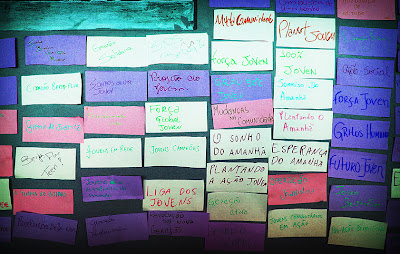 Certainly no lack of creativity with our youth group:
Certainly no lack of creativity with our youth group:Names like; Smiles of Tomorrow – Hope for Tomorrow – Changing Attitudes – Planet Youth – Sowing Tomorrow – Citizens Beija-Flor – Revolution Beija-Flor – Generation Solidarity – Changing Communities – Rhythms of a Dream – Youth Hope – Global Challenge...........
Faced with more than 70 suggestions to choose from, each participant was then given the opportunity to defend his or her suggestion, trying to convince the others why their idea should be the chosen one.
Come on guys, give me a break!
 Name by name, we all received a dose of better understanding as to why we should (or should not) vote for each proposal. Some suggestions were unanimously supported whilst others were doomed into obscurity by the enthusiastic and argumentative group.
Name by name, we all received a dose of better understanding as to why we should (or should not) vote for each proposal. Some suggestions were unanimously supported whilst others were doomed into obscurity by the enthusiastic and argumentative group.After the defence put their case forward, so to the voting; each participant had the right to vote in support of a maximum of five names.
Voting was energetic...
 It was obvious that some names were totally discarded by the group, not having received a single vote, whilst others received significant support. On finishing the first round of voting and identifying those without a vote, the list was diminished to names with more than five votes, whereupon a second defence and discussion round took place, eventually diminishing the number of competitors to five acceptable names, each receiving a last chance to defend their proposal.
It was obvious that some names were totally discarded by the group, not having received a single vote, whilst others received significant support. On finishing the first round of voting and identifying those without a vote, the list was diminished to names with more than five votes, whereupon a second defence and discussion round took place, eventually diminishing the number of competitors to five acceptable names, each receiving a last chance to defend their proposal.Defend yourself...!
 It was now free for everyone to defend what was being suggested and to state their opinion in the final round, which was between two names; ASAS do Beija-Flor (WINGS of Hummingbird) and Gritos Humanos (Humane Outcries).
It was now free for everyone to defend what was being suggested and to state their opinion in the final round, which was between two names; ASAS do Beija-Flor (WINGS of Hummingbird) and Gritos Humanos (Humane Outcries).  Gregory raised strong arguments in support of the ASAS do Beija-Flor proposal, stating that it was very much in line with the philosophy behind the Hummingbird Project, where the name Hummingbird and the lifestyle practiced by this amazing little, colourful bird, already held a significant position in the process of recuperating street children from being clients to citizens. He also emphasized the fact that the proposed nuclei to be implanted in the surrounding underprivileged communities were already being popularly called Hummingbird “Eggs” by our supporting Foundation in Norway and its sponsors, who had obviously identified our objectives to replicate the model we have created at our main Hummingbird Arts & Cultural Activity Centre.
Gregory raised strong arguments in support of the ASAS do Beija-Flor proposal, stating that it was very much in line with the philosophy behind the Hummingbird Project, where the name Hummingbird and the lifestyle practiced by this amazing little, colourful bird, already held a significant position in the process of recuperating street children from being clients to citizens. He also emphasized the fact that the proposed nuclei to be implanted in the surrounding underprivileged communities were already being popularly called Hummingbird “Eggs” by our supporting Foundation in Norway and its sponsors, who had obviously identified our objectives to replicate the model we have created at our main Hummingbird Arts & Cultural Activity Centre. So now it would seem obvious and natural that the youth in our capacity building programme represent the wings of the Hummingbird, flying out to embrace new communities, to share and multiply their knowledge and their desire to implement positive social changes.
 Gregory’s poetic vision managed to overthrow the competing and rather harsher Gritos Humanos, which also had many similarities to our existing social communication programme, Gritos Urbanos (Urban Outcries), resulting in a grand majority vote for ASAS do Beija-Flor or WINGS of Hummingbird.
Gregory’s poetic vision managed to overthrow the competing and rather harsher Gritos Humanos, which also had many similarities to our existing social communication programme, Gritos Urbanos (Urban Outcries), resulting in a grand majority vote for ASAS do Beija-Flor or WINGS of Hummingbird.
Friday, August 24, 2007
An even closer look...
The problems facing a community like Sítio Joaninha are many and demanding. During their reconnaissance tour of the community, the ASAS group could observe at close-hand what a clandestine community is all about and how the population find creative ways of surviving against all the odds.
The kind of clandestine power network in these photos is quite a common sight in underprivileged communities in Brazil such as the Sítio Joaninha, where we are preparing for our first community nucleus to prevent at-risk kids from hitting the streets. The literally hundreds of electric wires running back and forth across the open countryside give you some idea of the dimension of the problems facing an entire community.
I wonder where the cables to our new centre will fit in here.....?
Unbelievably, all these wires come from one source; a single, heavily decorated light post, it being the last one along the dirt track leading to the community of Sítio Joaninha. This is where the electricity supply to the regular community ends. From then on it’s all irregular networking.......
I’d hate to be the technician trying to figure out which cable is causing a short circuit along the line, a problem we will probably have to face with the installation of our new community centre here.
Our ASAS do Beija-Flor group on their reconnaissance tour of the community.
 The green area in the background is where CARF plans to build a new community centre in the near future, but until the authorities resolve the bureaucratic side of setting up a new building in a restricted water catchment region, we will just have to make best out of the temporary solution we are installing in an existing building.
The green area in the background is where CARF plans to build a new community centre in the near future, but until the authorities resolve the bureaucratic side of setting up a new building in a restricted water catchment region, we will just have to make best out of the temporary solution we are installing in an existing building.This will be the base from where our ASAS group will work from.
 Almost irreparable destruction...
Almost irreparable destruction...Grey and black water is the term for all household waste water. Black water carries the faecal matter and the urine, while grey water refers to the rest of household wastewater. In the photo below it is obvious that the natural streams with their flowing blackened water from the Sítio Joaninha, are suffering from negligence by the very humans who have themselves been neglected for many years by our society.
 Unfortunately, the uncontrolled human invasion of this water catchment region during the last 3 decades has destroyed the natural quality of the subterranean water flow, especially due to 30 years use of the area as the district’s main rubbish tip (see this slide show from when the tip was still in use), which consequently continues to pollute the groundwater of Sítio Joaninha and will continue to do so for many years to come, even though the tip was definitively closed in 2001. Due to their proximity to the Billings reservoir, the streams from Sítio Joaninha eventually join up to this main drinking water source for the entire city of São Paulo contributing towards its constant pollution.
Unfortunately, the uncontrolled human invasion of this water catchment region during the last 3 decades has destroyed the natural quality of the subterranean water flow, especially due to 30 years use of the area as the district’s main rubbish tip (see this slide show from when the tip was still in use), which consequently continues to pollute the groundwater of Sítio Joaninha and will continue to do so for many years to come, even though the tip was definitively closed in 2001. Due to their proximity to the Billings reservoir, the streams from Sítio Joaninha eventually join up to this main drinking water source for the entire city of São Paulo contributing towards its constant pollution.The once crystalline streams are now blackened by sewerage.
 Due to the clandestine allotments in the area stretching over two boarderline municipalities with consequently both municipal government’s divided unwillingness to take responsibility for the community’s public services, rubbish continues to pile up in Sítio Joaninha. Our youth group will most certainly have a difficult task in deciding what environmental project will best benefit this community when they take on the task as part of their capacity training later on this year.
Due to the clandestine allotments in the area stretching over two boarderline municipalities with consequently both municipal government’s divided unwillingness to take responsibility for the community’s public services, rubbish continues to pile up in Sítio Joaninha. Our youth group will most certainly have a difficult task in deciding what environmental project will best benefit this community when they take on the task as part of their capacity training later on this year.
The next generation...
The children from Sítio Joaninha who worked on the rubbish tip when this photo series was taken back in the early 90's are now adult.......at least those who survived the extreme working conditions that were clearly dangerous for their safety, health and emotional stability. On the immense rubbish tip they were subjected to physical and moral indignities and to exhausting working hours, working at the mercy of the elements, in unnatural positions and were exposed to chemical substances, sharp tools and animal and insect bites. If research could be done on the consequences of those tough years for those working on the tip, the results would probably raise some alarming discoveries, but who would be made responsible?
Surviving on what we learnt in our childhood
 The twins above, Dinho and Isaac, worked long tough hours on the rubbish tip for most of their childhood years (pictured also above in the black & white photo taken in the early 90's) together with their entire family, whom I remember were an extremely hard-working one during my many visits to the tip back in those early years of the Hummingbird Project.
The twins above, Dinho and Isaac, worked long tough hours on the rubbish tip for most of their childhood years (pictured also above in the black & white photo taken in the early 90's) together with their entire family, whom I remember were an extremely hard-working one during my many visits to the tip back in those early years of the Hummingbird Project.I recall once having rescued 18 old cast-iron and wooden school benches from destruction, which their once very strong mother was about to set fire to, to salvage the scrap iron. The benches had been dumped there and as far as they were concerned the iron would fetch a nice little sum of money. I purchased the benches for the scrap iron price, which were later restored and used in the first schoolhouse at our street kids recuperation centre.
It was a joy to meet up with these two once again during our reconnaissance tour of the community, but sad to hear of their mother's early death. The twins still do recycling of waste, surviving on what they learnt in their childhood.
Subscribe to:
Comments (Atom)

